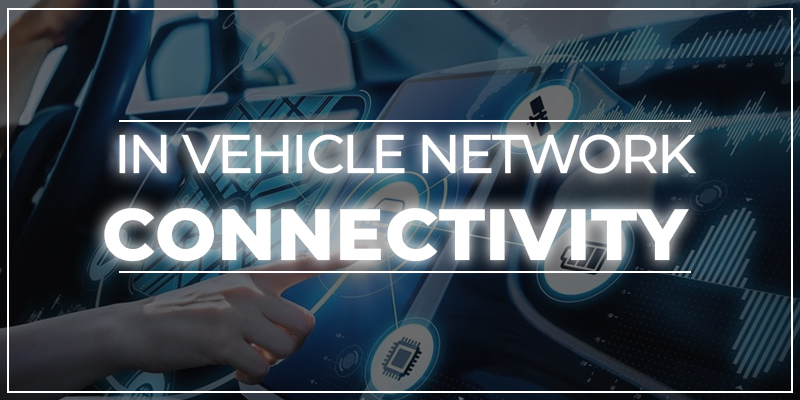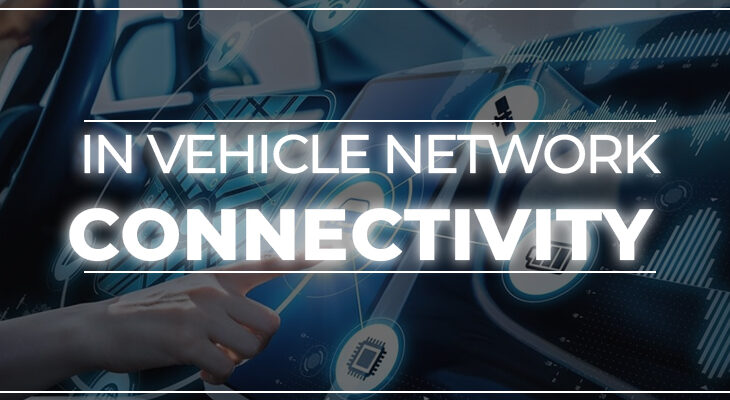
There are several in-vehicle network technologies used in modern vehicles. The major differences among these technologies are their data transfer rates, communication protocols, and intended applications. Here are four commonly used in-vehicle network technologies:
Controller Area Network (CAN): CAN is a widely used network technology in vehicles. It has a moderate data transfer rate (typically up to 1 Mbps) and uses a serial communication protocol. CAN is designed for real-time applications and allows multiple electronic control units (ECUs) to communicate efficiently. It is commonly used for functions such as engine control, transmission control, and chassis control.
Local Interconnect Network (LIN): LIN is a lower-cost, lower-speed network technology compared to CAN. It typically operates at data rates up to 20 Kbps. LIN is primarily used for communication between less critical and lower-bandwidth components in a vehicle, such as interior lighting, mirrors, and climate control.
FlexRay: FlexRay is a high-speed, deterministic network technology primarily designed for advanced safety and driver-assistance systems. It offers higher data transfer rates (up to 10 Mbps) compared to CAN, enabling real-time, fault-tolerant communication. FlexRay is used for applications such as braking systems, adaptive cruise control, and active suspension systems.
Ethernet: Ethernet is a high-speed network technology widely used in computer networks. In vehicles, Ethernet is increasingly being adopted for high-bandwidth applications like infotainment systems, advanced driver assistance systems (ADAS), and telematics. Ethernet provides data rates up to 1 Gbps and supports the use of internet protocol (IP) communication.
Each of these in-vehicle network technologies serves specific purposes and is suited for different types of applications based on their data transfer rates, communication protocols, and cost considerations.
The common uses of the different network protocols in vehicles are as follows:
Controller Area Network (CAN):
Engine control: CAN is used to communicate between the engine control unit (ECU) and various engine components, such as sensors and actuators, to control fuel injection, ignition timing, and other engine functions.
Transmission control: CAN facilitates communication between the transmission control unit (TCU) and components like the clutch, gearbox, and sensors for smooth shifting and efficient power transfer.
Chassis control: CAN enables communication between the electronic stability control (ESC) system, anti-lock braking system (ABS), traction control system (TCS), and other chassis components for enhanced vehicle stability and safety.
Body electronics: CAN is used for communication between ECUs controlling functions like power windows, central locking, lighting, climate control, and dashboard displays.
Local Interconnect Network (LIN):
Interior lighting control: LIN is commonly used for communication between the body control module (BCM) and interior lighting components, allowing control of functions like dimming, on/off, and color changing.
Climate control: LIN facilitates communication between the BCM and components like heating, ventilation, and air conditioning (HVAC) actuators, sensors, and switches.
Mirrors: LIN is used to communicate between the BCM and side mirrors, controlling features like folding, adjustment, and heating.
FlexRay:
Advanced driver assistance systems (ADAS): FlexRay is utilized for communication between ECUs in ADAS applications, including adaptive cruise control, lane-keeping assist, collision avoidance, and parking assist systems.
Brake control: FlexRay allows communication between the brake control unit and individual wheel-speed sensors, enabling precise and rapid brake interventions.
Active suspension systems: FlexRay is used for communication between suspension control modules, sensors, and actuators for real-time adjustment of suspension settings based on road conditions and driver preferences.
Ethernet:
Infotainment systems: Ethernet supports high-bandwidth audio and video streaming, connectivity to mobile devices, navigation systems, and software updates in infotainment systems.
Telematics: Ethernet enables communication between the vehicle’s onboard systems and external networks for services such as remote vehicle diagnostics, over-the-air updates, and connected services.
Advanced driver assistance systems (ADAS): Ethernet is used to transmit large amounts of data between cameras, radars, LiDAR sensors, and central processing units in ADAS applications for functions like object detection, lane keeping, and automated emergency braking.
These are some common applications for each network protocol, but the specific uses can vary depending on the vehicle make, model, and generation, as well as the implementation choices made by automakers and suppliers.
Sunstream has been providing embedded software development services for the electric, off road automotive industry for several years. Our engineers are well versed with all connectivity technologies and has developed applications using most of these platforms. Reach out to us to know more about how you can reduce the cost of embedded development and set up a high value engineering center in India without any upfront cost.




 +1.585.935.7123
+1.585.935.7123 +91-804-148-6861
+91-804-148-6861